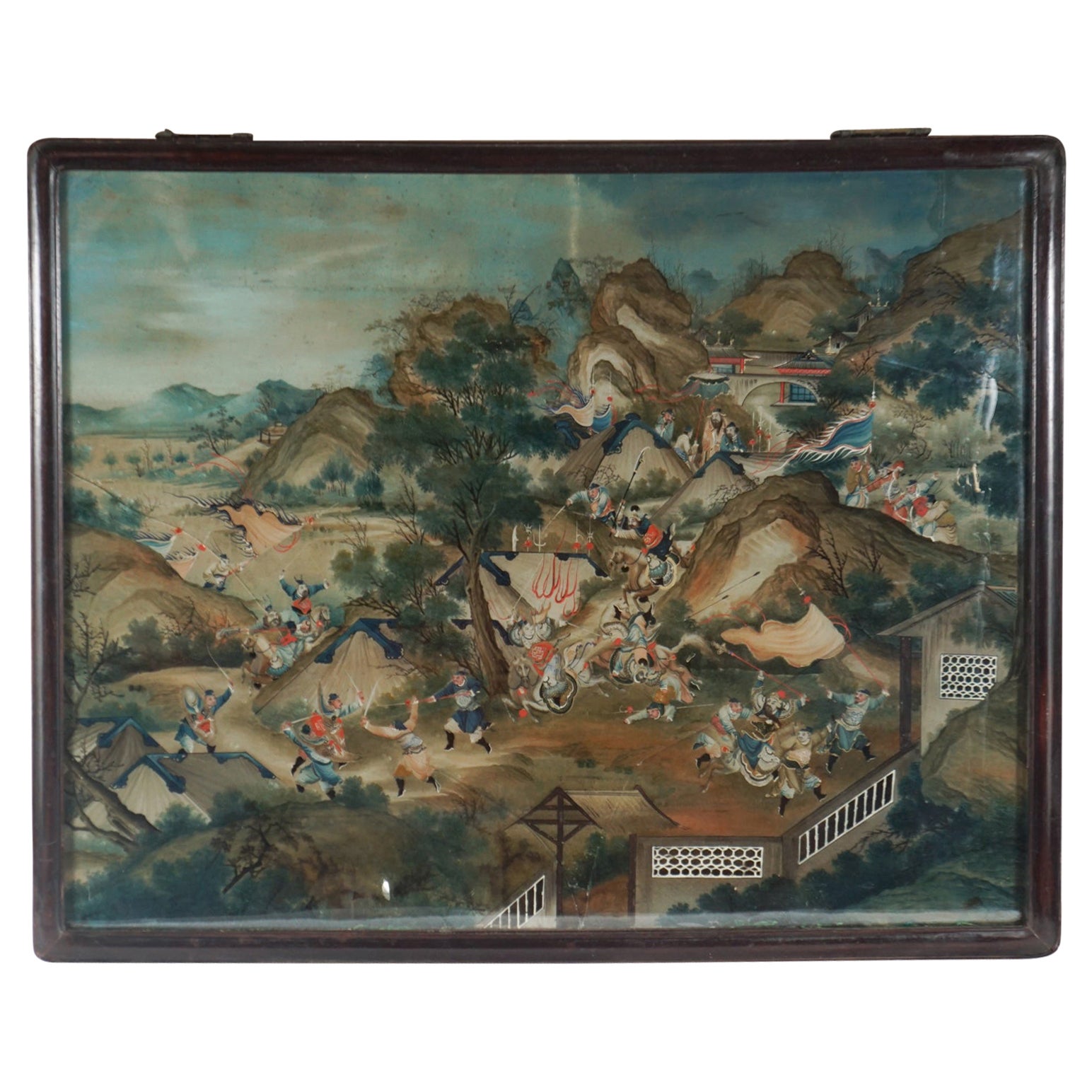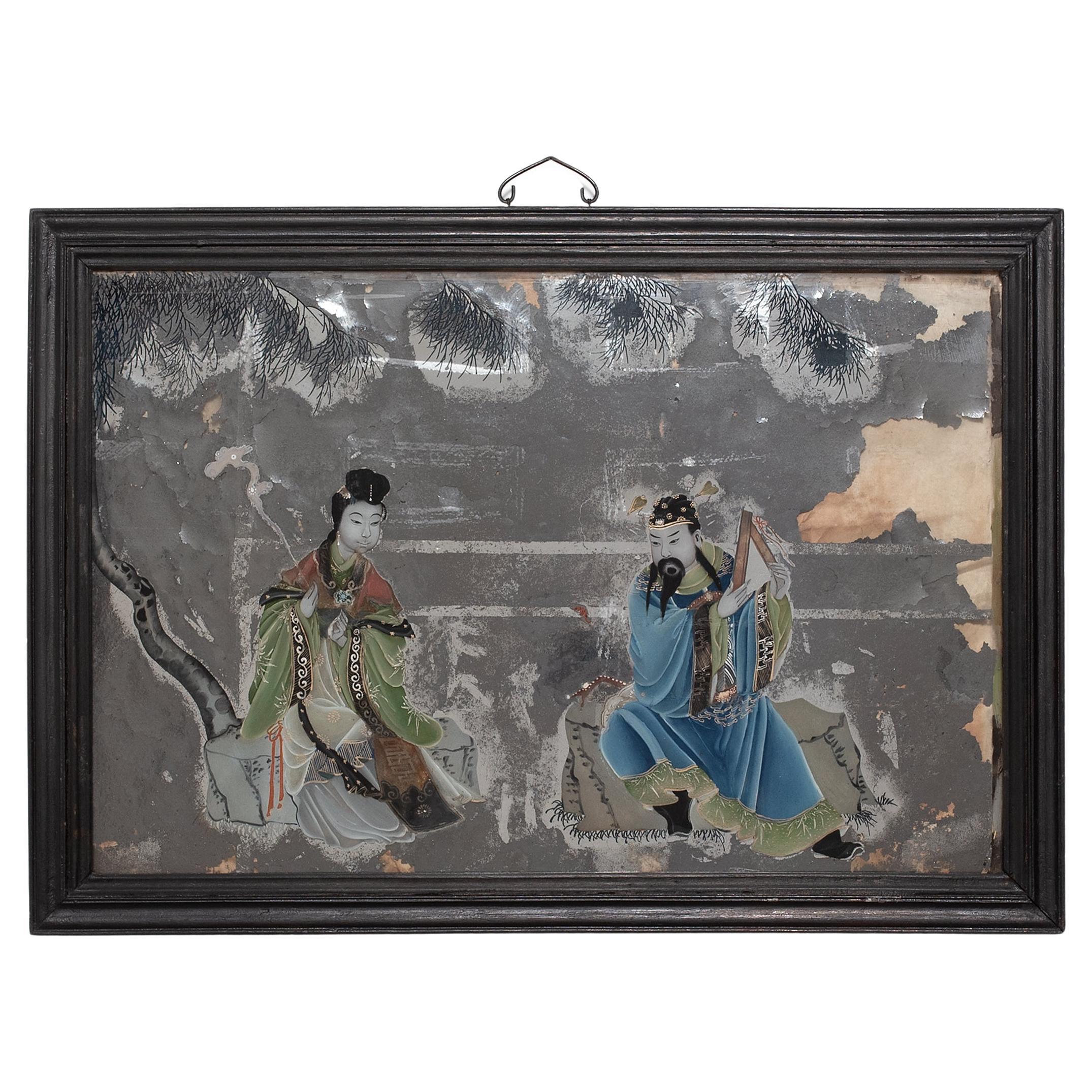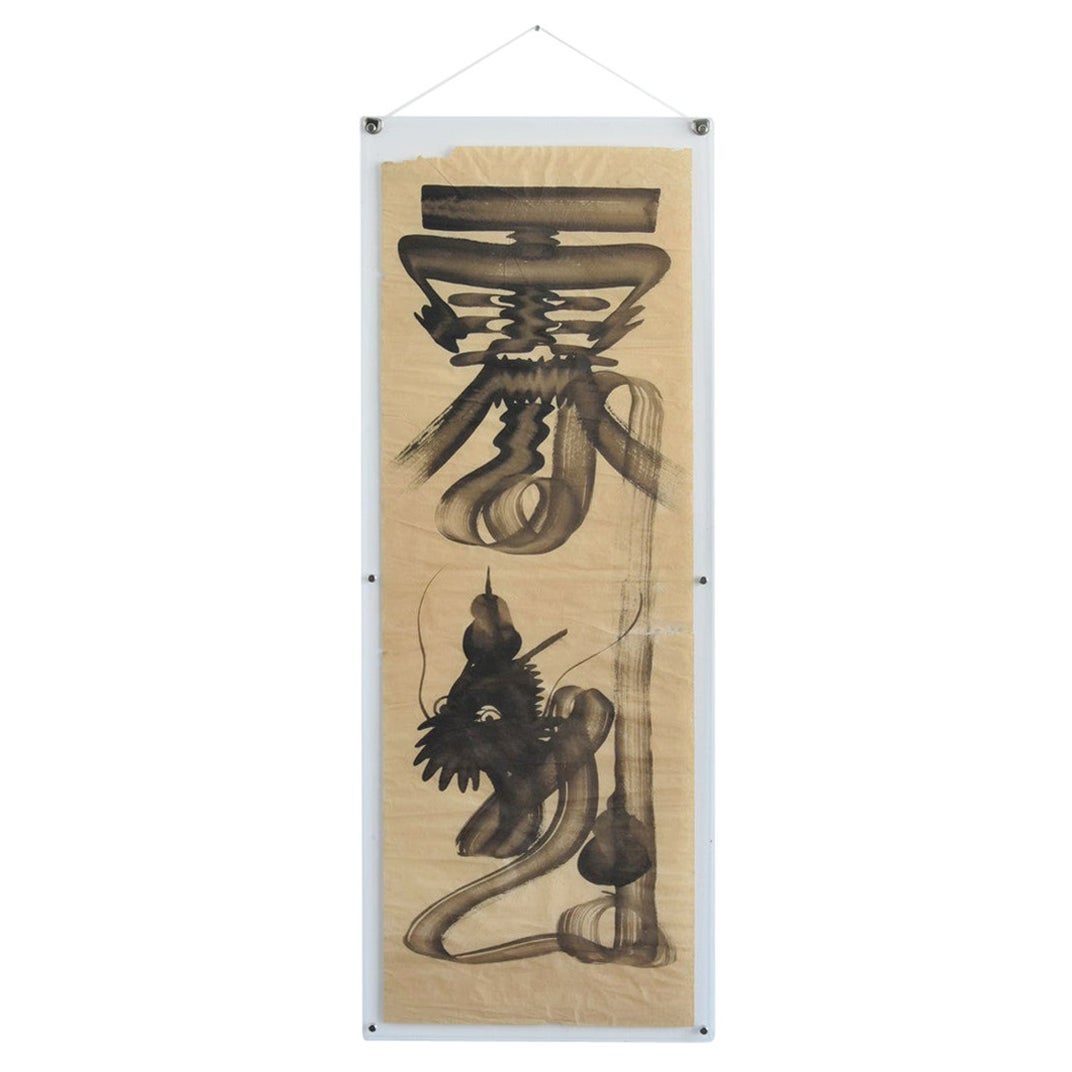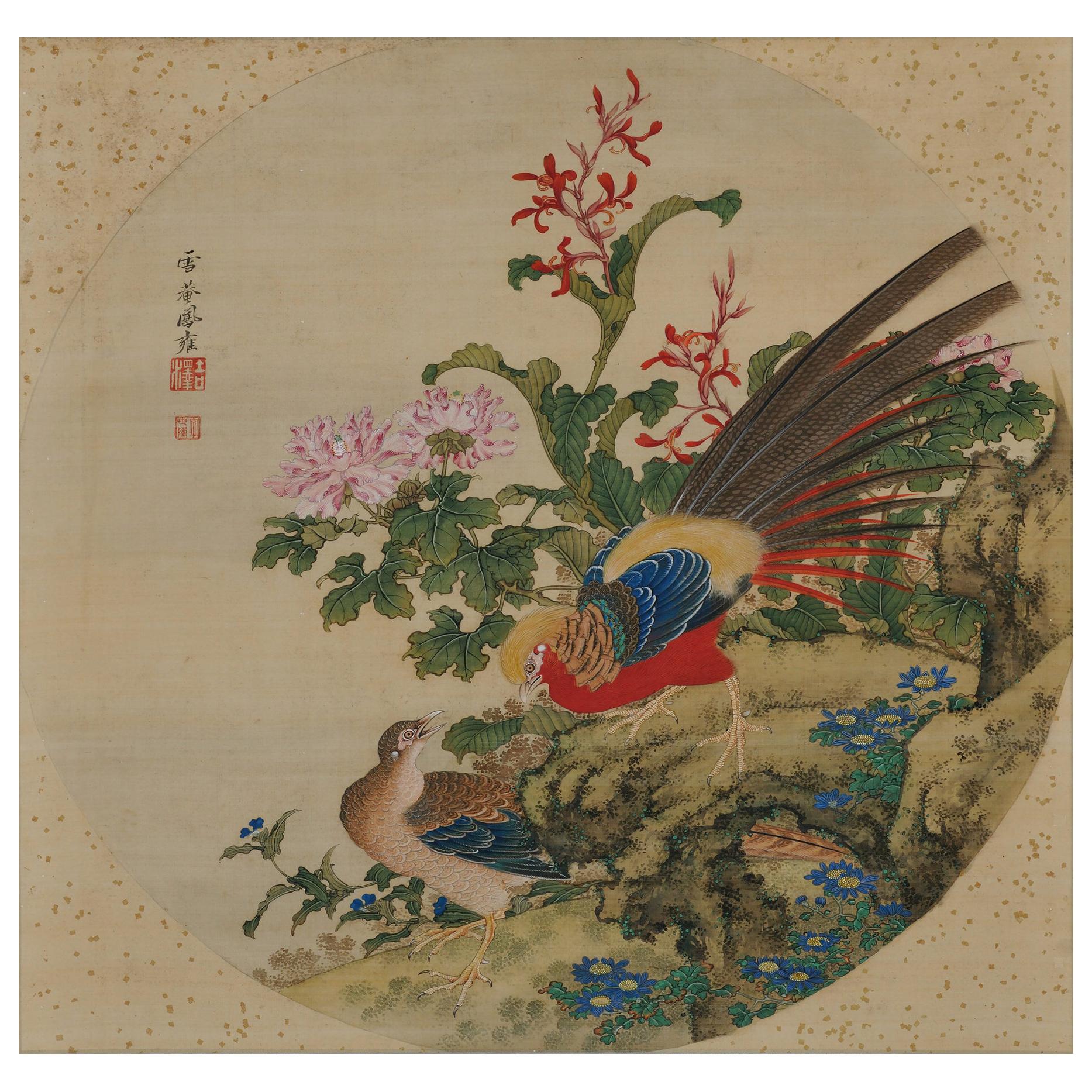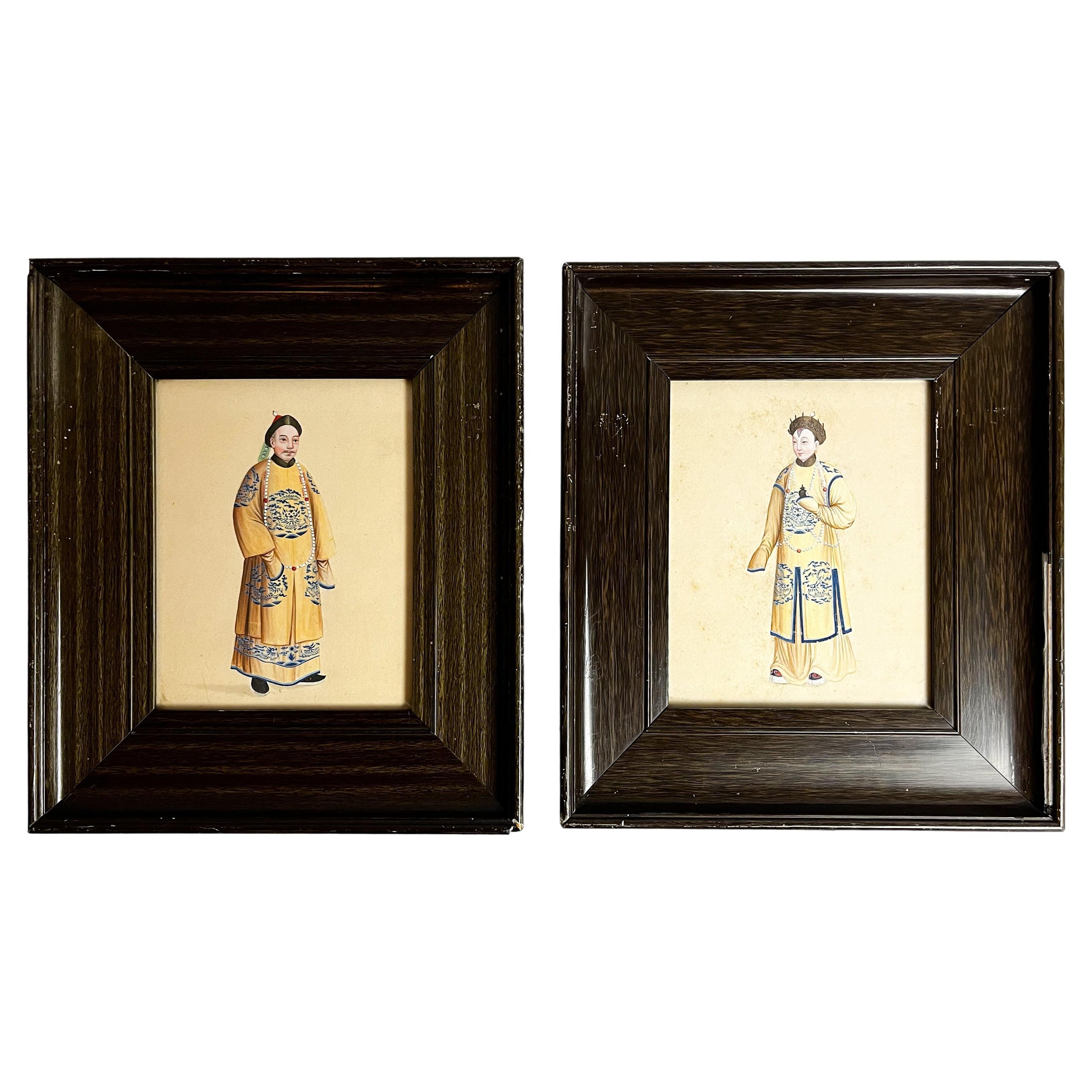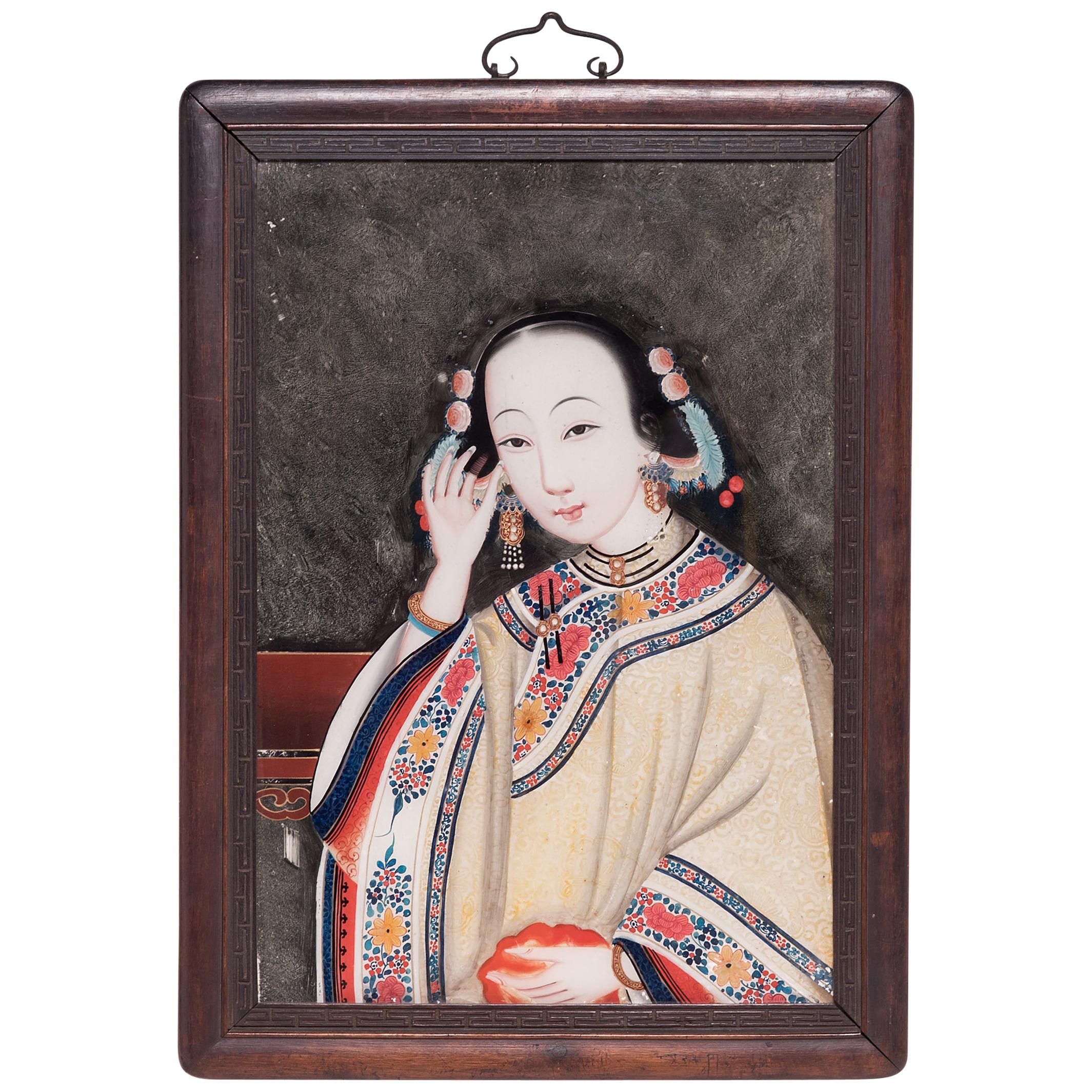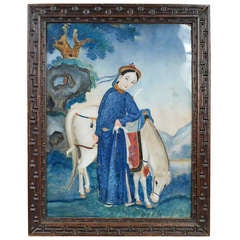
Chinese Reverse Glass Painting 19th Century
View Similar Items
1 of 3
Chinese Reverse Glass Painting 19th Century
About the Item
- Dimensions:Height: 18.23 in (46.3 cm)Width: 14.38 in (36.5 cm)Depth: 0.79 in (2 cm)
- Place of Origin:
- Period:
- Date of Manufacture:1840 -1860
- Condition:Wear consistent with age and use.
- Seller Location:Paris, FR
- Reference Number:1stDibs: LU95211057578
You May Also LikeView All
- Chinese Reverse Glass Painting of Woman, Early 20th CenturyLocated in Jimbaran, BaliThis Chinese portrait depicts a young woman and was painted using a reverse glass painting technique. Painting in reverse on the opposite side of a piece of glass meant the painter h...Category
Early 20th Century Chinese Qing Paintings and Screens
MaterialsGlass, Wood, Paint
- Pair of 19th Century Chinese Reverse-Painted Mirror PicturesLocated in Rome, ITA pair of Chinese reverse glass painting representing women and a child in a garden pavillion. Original "Chinese Chippendale" framing. China for expo...Category
Antique 19th Century Chinese Chinese Export Paintings
MaterialsArt Glass
- Chinese Late 18th Century Reverse Painting on Glass in its Original FrameLocated in Hudson, NYThis large reverse painting on glass from China circa 1780 to 1790 depicts a dramatic battle scene of numerous horsemen and infantry charging in a very...Category
Antique Late 18th Century Chinese Paintings and Screens
MaterialsGlass
- Chinese Reverse Glass Painting of Taoist Immortals, c. 1900Located in Chicago, ILPopularized during the Qing dynasty, reverse glass painting requires an artist to essentially work backwards, starting with details and shading before adding color and form. Lending the finished work a subtle three-dimensional effect, this exacting technique doesn't allow for any corrections, and is only revealed to its full effect when the glass pane is turned around. This example dates to the late 19th century and depicts the Taoist immortals He Xiangu and Cao Guojiu. Said to have attained immortality through their studies of the natural world, the Eight Immortals each represent a different condition in life and impart blessings of prosperity and longevity. The charming scene is likely one of a set of...Category
Early 20th Century Chinese Paintings and Screens
MaterialsGlass, Wood
- Japanese Antique Ink Painting / 19th Century / Rare Chinese Character PaintingLocated in Sammu-shi, ChibaWe have a unique Japanese aesthetic sense. And only we can introduce unique items through our purchasing channels in Japan and the experience we have gained so far, in such a way that no one else can imitate. It is an ink painting written after the Meiji era. The biggest attraction of this work is that it uses Chinese characters to create paintings. To explain in detail, it is written here in Chinese characters as "un-ryu" . "Un" is a cloud and "ryu" is a dragon. These are embodied and drawn by comparing them to the meaning of Chinese characters. And the clouds depict the clouds hanging over the mountain, and the dragon depicts the climbing toward the mountain. Humorous paintings...Category
Antique Late 19th Century Japanese Edo Paintings
MaterialsAcrylic, Paper
- Japanese Scroll Painting, 19th Century Chinese Pheasants by Yoshizawa SetsuanLocated in Kyoto, JPChinese Pheasants Yoshizawa Setsuan (1809-1889) Hanging scroll, ink and color on silk. Painting inscription: Setsuan Houyou Upper seal: Y...Category
Antique Mid-19th Century Asian Meiji Paintings and Screens
MaterialsSilk
Recently Viewed
View AllMore Ways To Browse
Reverse Glass Painting Asian
Reverse Painting On Glass 18th Century
Antique Miror
Antique Mirors
Chinese Horse Screen
Chinese Reverse Glass Mirror 19th Century
Framed Asian
Antique Screen
Antique Screens
Screen Antique
Antique Screens Furniture
Antique Screen Antique Furniture
Asian Art Framed
Asia Painting
Art Panels Asian
Asia Screen
Japanned Screens
19th Century Screen


